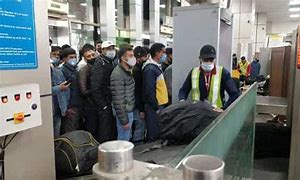Feature
“Super Rich” husband to pay Rs 4 Lakh monthly to estranged wife after divorce

New Delhi: Sounds unbelievable, but true! A millionaire husband has been directed by a Delhi court to pay his estranged spouse a whopping Rs four lakh maintenance every month with 15 per cent raise every year for deserting her and their sole minor daughter.
The fact that the husband figured in the list of “Super Rich” category of a business magazine and the net worth of his business was around Rs 1,000 crore, was taken note by the court in fixing the maintenance.
Principal Judge Narottam Kaushal awarded additional 15 per cent per year raise in the maintenance amount for her and her daughter, noting that there was a “significant jump” in the income of the husband in two financial years which could not be ignored.
“The ranking of the family business in the ‘Super Rich List’ and assets of these firms at Rs 921 crore published in Fortune 500 publication, indicates that the husband belongs to a very affluent business family of India,” the judge said, adding “he is the only son” who is living with his father.
It noted that the man’s income for the year 2011-12, when the maintenance application was filed, compared with income for the year of decision (2012-13) by a magisterial court earlier, showed a quantum jump of more than double the income.
“Whether this radical change was a result of accounting jugglery or a result of concealment, is a question, which this court would leave unanswered. However, the jump is too significant to be ignored.
“The applicant (woman) cannot be denied the benefits of this increased income of the husband,” the judge said.
The woman, in her application filed through advocate Manav Gupta, had alleged that she was thrown out of her matrimonial house in March 2008 after which she had filed a petition in high court for maintenance.
However, during the pendency of the maintenance petition, the husband filed a petition for dissolution of marriage in January 2011.
Millionaire husband to pay Rs 4 Lakh monthly maintenance fee to estranged spouse:
She then moved the trial court for maintenance on August 4, 2011 and a magisterial court on February 8, 2013 granted her a maintenance of Rs 1.25 lakh a month.
In the proceedings before the high court, she was granted a maintenance of Rs 75,000 per month on March 5, 2013.
Both these orders were challenged before higher courts which eventually reached the Supreme Court.
The apex court through its April 2014 order had remitted the matter back to the trial court, after which the woman withdrew the plea before high court.
The woman, thereafter, in her application filed in before the family court had sought pendente lite maintenance from the date of desertion by her husband claiming that he had appeared in the list of Super Rich in Business World magazine in 2010.
Pendente lite maintenance is the amount of maintenance during the pendency of the proceedings.
While seeking Rs seven lakh per month maintenance, the woman’s counsel had said the husband “had a family business of net worth of Rs 921.28 crore. His house is as good as a five star hotel.”
The husband, however, had claimed that he was the Director of various companies but earned a monthly salary of Rs 90,000 from only one firm.
Entertainment
Meghalaya Reserves Legalized Gambling and Sports Betting for Tourists

The State Scores Extra High on Gaming-Friendly Industry Index
Meghalaya scored 92.85 out of 100 possible points in a Gaming Industry Index and proved to be India’s most gaming-friendly state following its recent profound legislation changes over the field allowing land-based and online gaming, including games of chance, under a licensing regime.
The index by the UK India Business Council (UKIBC) uses a scale of 0 to 100 to measure the level of legalisation on gambling and betting achieved by a state based on the scores over a set of seven different games – lottery, horse racing, betting on sports, poker, rummy, casino and fantasy sports
Starting from February last year, Meghalaya became the third state in India’s northeast to legalise gambling and betting after Sikkim and Nagaland. After consultations with the UKIBC, the state proceeded with the adoption of the Meghalaya Regulation of Gaming Act, 2021 and the nullification of the Meghalaya Prevention of Gambling Act, 1970. Subsequently in December, the Meghalaya Regulation of Gaming Rules, 2021 were notified and came into force.
All for the Tourists
The move to legalise and license various forms of offline and online betting and gambling in Meghalaya is aimed at boosting tourism and creating jobs, and altogether raising taxation revenues for the northeastern state. At the same time, the opportunities to bet and gamble legally will be reserved only for tourists and visitors.
“We came out with a Gaming Act and subsequently framed the Regulation of Gaming Rules, 2021. The government will accordingly issue licenses to operate games of skill and chance, both online and offline,” said James P. K. Sangma, Meghalaya State Law and Taxation Minister speaking in the capital city of Shillong. “But the legalized gambling and gaming will only be for tourists and not residents of Meghalaya,” he continued.
To be allowed to play, tourists and people visiting the state for work or business purposes will have to prove their non-resident status by presenting appropriate documents, in a process similar to a bank KYC (Know Your Customer) procedure.
Meghalaya Reaches Out to a Vast Market
With 140 millions of people in India estimated to bet regularly on sports, and a total of 370 million desi bettors around prominent sporting events, as per data from one of the latest reports by Esse N Videri, Meghalaya is set to reach out and take a piece of a vast market.
Estimates on the financial value of India’s sports betting market, combined across all types of offline channels and online sports and cricket predictions and betting platforms, speak about amounts between $130 and $150 billion (roughly between ₹9.7 and ₹11.5 lakh crore).
Andhra Pradesh, Telangana and Delhi are shown to deliver the highest number of bettors and Meghalaya can count on substantial tourists flow from their betting circles. The sports betting communities of Karnataka, Maharashtra, Uttar Pradesh and Haryana are also not to be underestimated.
Among the sports, cricket is most popular, registering 68 percent of the total bet count analyzed by Esse N Videri. Football takes second position with 11 percent of the bets, followed by betting on FIFA at 7 percent and on eCricket at 5 percent. The last position in the Top 5 of popular sports for betting in India is taken by tennis with 3 percent of the bet count.
Local Citizens will Still have Their Teer Betting
Meghalaya residents will still be permitted to participate in teer betting over arrow-shooting results. Teer is a traditional method of gambling, somewhat similar to a lottery draw, and held under the rules of the Meghalaya Regulation of the Game of Arrow Shooting and the Sale of Teer Tickets Act, 2018.
Teer includes bettors wagering on the number of arrows that reach the target which is placed about 50 meters away from a team of 20 archers positioned in a semicircle.
The archers shoot volleys of arrows at the target for ten minutes, and players place their bets choosing a number between 0 and 99 trying to guess the last two digits of the number of arrows that successfully pierce the target.
If, for example, the number of hits is 256, anyone who has bet on 56 wins an amount eight times bigger than their wager.




























